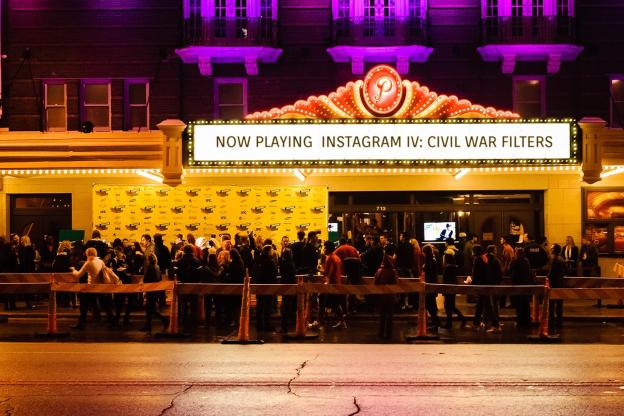
If you haven’t received a 15 second video selfie from someone yet, I applaud your choice of friends. For the rest of us, the unlucky ones, the news of Instagram’s new video feature came not with a whimper, but a “What the hell is this?” In case you’ve been living under a rock and/or have a life, last week Instagram, based on the growing popularity of Vine, decided the best way outdo the competition was to basically just… do their competition. Meaning they made their own version of Vine. But theirs is 15 seconds long you say? Well, honk my hooter; that changes everything!
As expected, the internets were a buzz with the news, announcing the impending doom of all things Vine. It is a shame, too. Vine was just getting cool. Not only were they getting some talent agency love, but even this guy was using their platform. It’s enough to make you wanna grab a Heineken.
I guess the move makes great business sense, but the cannibalistic nature of the whole thing feels a little dirty, doesn’t it? And a little… well, Hollywood. Not in the typical douchey, look-at-me kind of way, but Hollywood nonetheless. The connection between the Tech and Entertainment industries has always been close, and not just because Hollywood and Silicon Valley are the two most reliable West Coast stops on President Obama’s fundraising trips. Both industries rely on creativity as the lifeblood to commercial success. And it seems, to me at least, that both industries have a tendency to stifle that creativity in much the same way.
There are many ways to do that. Obviously, what Instagram did was mimic the competition. But before we explore to the way Hollywood does that, let’s first take a look at the trailer for White House Down, the movie about a breach in White House security set to wow audiences this weekend!
Aaron Sorkin is branching out from writing about a young tech billionaire and writing about a dead tech billionaire.
The other way to go suffocating creativity with a pillow while it’s sleeping is to just buy up your competition. In the same way Facebook bought Instagram, Twitter bought Vine, and Yahoo bought whatever was left … and also Tumblr. What happens then is slowly but surely the big boys now in charge start softening the edges to make it more “well lit” (that’s marketing-speak for “brand safe” and normal person-speak for “G-rated”). That’s why Tumblr users have worked themselves into a lather; they think Yahoo! is going to rearrange the furniture at their favorite online home, and they may be right. I mean, what are we doin’ here? If we can’t find NSFW material on Tumblr, the terrorists win. USA! USA! By the way, is everyone excited to see The Lone Ranger this summer? As a kid, I loved watching reruns of the old television show, but the film doesn’t look anything like it. Also, I heard that Spike Lee’s making a remake of the Korean cult-classic Oldboy. Do you think it will have this scene in it? Probably not.
It seems like the goals for Silicon Valley entrepreneurs have changed; save for maybe Craig Newmark, I can’t think of an independent maverick carrying a torch for kind of ground-shifting ideas and business models that characterized the original dot com boom or Web 2.0. You don’t become the next Apple, Facebook, Google, or Yahoo! by selling the farm to Apple, Facebook, Google, or Yahoo!. And while it’s fair to point out that those firms have frequently succeeded by perfecting existing ideas, I think it’s also fair to say that Puppystream (“Instagram for dog owners”) will not do for image-based social media networks what the iPod did for portable music players.
I can’t begrudge anyone for making a buck, and definitely not gazillions of bucks, and maybe the current business climate in the Valley demands just this sort of limp iterative thinking to succeed financially. But something tells me there won’t be a Tumblr movie a decade from now. Although if there is one, I’m sure Aaron Sorkin will be all over it.


